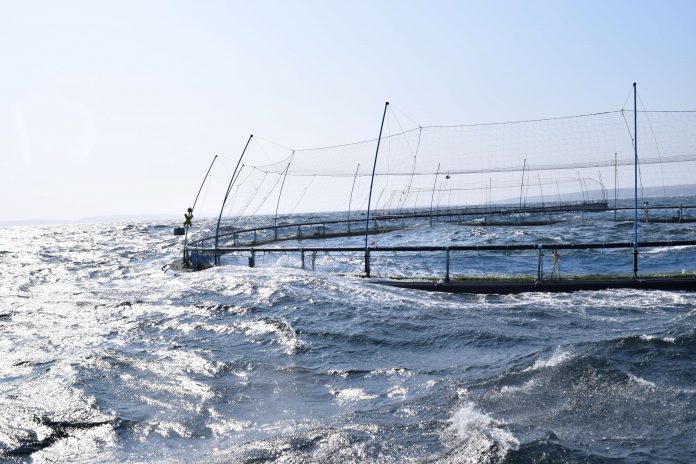New tool being developed with salmon farmer and academics to help aquaculture industry understand environmental impact.
The consortium – led by Cooke Aquaculture and the Scottish Association for Marine Science (SAMS) with funding from the Scottish Aquaculture Innovation Centre (SAIC) – is exploring how measuring sulphides on the seabed could better track the impact of biomass from fish farms at six sites in Scotland and Canada, the SAIC wrote in a press release on Monday.
The study will be supported by Nova Scotia-based Dalhousie University, the University of the Highlands and Islands (UHI) and Fisheries and Oceans Canada (DFO) and the new approach is expected to monitor the impact of fish farms more quickly, accurately, and cost-effectively. The consortium is also consulting the Scottish Environment Protection Agency (SEPA).
Trial
Sulphide levels, which can rise because of fish waste or uneaten feed from nearby farms, are widely considered to be a reliable indicator of sediment becoming too enriched to sustain organisms. The approach has previously been trialled in combination with other techniques in Canada.
While existing environmental impact models – such as Depomod and NewDepomod – have been used to analyse the footprint of fish farms and inform mitigation, their reliability in high-energy, less predictable waters is still being tested. The models’ current limitations have restricted the deployment of fish farms in areas such as Orkney and Shetland, where high flow rates and harder sediment make it more difficult to predict and analyse dispersal patterns.
Keen to make sure we get this right
SAMS ecologist Clive Fox said: “The industry and regulator in Scotland acknowledge that the current tools for measuring fish farm impacts still need to be refined. That’s why everyone involved in aquaculture is keen to make sure we get this right. We need to have a better understanding of how waste is being dispersed from fish farms and where it is having a significant effect on the benthos.
“Tracking sulphides could be a significant complementary technology to the existing approaches, delivering more accurate results both in waters with high dispersal rates and in sheltered areas, such as lochs or along the west coast. In fact, it could go a long way towards informing future site selection and significantly cut the amount of time and resource currently required to analyse samples and get results – to date, this has been a slow and labour-intensive process.
“Our approach would make it much easier to take a sample from the seabed, use electrodes to measure sulphide levels, and within a couple of days have a result. This could allow operators to understand their impact on the local environment much more quickly and take action if it’s required.”
Monitoring the marine environment
The project builds on the work of initiatives previously supported by SAIC which aim to help the aquaculture industry grow sustainably. The innovation centre has worked with industry and academia to test models’ predictions with the actual dispersal of biomass. It has also explored the development of eDNA toolkits to analyse the impact of fish farm waste on the benthos from small scoops of sediment.
SAIC Aquaculture innovation manager Polly Douglas added: “This project will enhance the work already underway in Scotland to enhance our understanding of how aquaculture affects the organisms living on the seabed and what can be done in response. Ultimately, we hope it will provide us with the best way forward for monitoring the marine environment in highly dispersive waters – a crucial issue for the industry as it looks to find suitable new locations and potentially increase production at existing sites with spare capacity. It is also another example of the ways in which we are looking to support aquaculture’s long-term ambition to sustainably double its economic contribution by 2030, ensuring the environment is being monitored and the industry is complying to strict environmental guidelines.”

